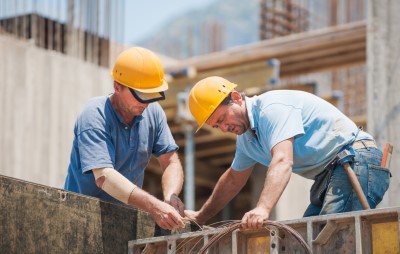Construction in Australia – Key Trends and Opportunities by State and Territory to 2023
Powered by ![]()
All the vital news, analysis, and commentary curated by our industry experts.
GlobalData’s Construction in Australia – Key Trends and Opportunities by State and Territory to 2023 report provides detailed market analysis, information and insights into the Australian construction industry, including –
– The Australian construction industry's growth prospects by market, project type and construction activity
– Critical insight into the impact of industry trends and issues, as well as an analysis of key risks and opportunities in the Australian construction industry
– Analysis of the mega-project pipeline, focusing on development stages and participants, in addition to listings of major projects in the pipeline.
The overall Australian construction industry is facing a troubled period ahead, with 2019 set to be another year of decline in total output, following the negative outturn in 2018. Although this partly reflects a lull in activity in construction on major energy projects, of greater concern is the weakness in the residential sector. However, infrastructure investment is set to strengthen, which will contribute to growth momentum over the forecast period. The election victory for the Liberal-National coalition government in the May 2019 elections ensures continuity across a range of major infrastructure development programs and projects.
The industry’s output value declined by 3.7% in real terms in 2018, reflecting a sharp drop in activity in the oil and gas sector as major projects were completed. The industry is expected to remain weak in 2019, contracting by 2.4% in real terms, before regaining growth momentum over the remainder of the forecast period (2019–2023). The improvement will be driven by investments in transport infrastructure, with the government planning to invest AUD75.0 billion (US$58.9 billion) to develop the country’s transport infrastructure by 2027–2028. Commercial and industrial projects and an improvement in consumer and investor confidence will also provide support, offsetting the downturn in residential construction.
The industry’s output value in real terms is expected to rise at a compound annual growth rate (CAGR) of 2.14% over the forecast period, compared to -1.59% during the review period (2014–2018).
Key Highlights
– GlobalData expects the residential construction market to weaken over the forecast period and account for 31.6% of the industry’s total value in 2023. This is due to oversupply of new residential buildings in urban centers, as well as tighter lending conditions. Highlighting the gloomy outlook for the residential sector, the total number of dwelling units approved in the country decreased by 22.1% year-on-year in the first four months of 2019, according to the Australian Bureau of Statistics (ABS), following declines of 5.8% in 2018 and 4% in 2017.
– Forecast-period growth in the infrastructure construction market will be driven by the government and private sector investment in transport infrastructure. In the 2019 budget, the government announced plans to invest AUD100 billion (US$73.4 billion) to develop the country’s transport infrastructure over the next ten years. Through this, the government plans to develop road, rail, airport and other transport infrastructure with an aim to improve passenger and freight carrying capacity. Of the total budget, the government allocated AUD20.6 billion (US$15.1 billion) for the development of railway infrastructure and AUD4.5 billion (US$3.3 billion) for the road development.
– GlobalData expects the energy and utilities construction market to record a forecast-period CAGR of 6.28% in nominal terms, supported by the government’s investment in renewable energy infrastructure. The government aims to generate 50% of the total country’s energy mix from renewable energy by 2025. Accordingly, the government plans to install 10.0GW of new solar and wind power plant by the end of 2019, and generate 33,000GWh of renewable electricity by 2020.
– Industrial construction market’s forecast-period growth will be driven by the government’s focus on the expansion of manufacturing sector through the initiatives such as Supporting Advanced Manufacturing, Industry 4.0 and Transitioning Australia’s Automotive Manufacturing Industry. Under the Supporting Advanced Manufacturing Initiatives, the government encourages innovative production, investment in new technologies and provides facilities to test new products.
– The total construction project pipeline in Australia – as tracked by GlobalData, and including all mega projects with a value above US$25 million – stands at AUD1.4 trillion (US$1 trillion). The pipeline, which includes all projects from pre-planning to execution, is skewed towards early-stage projects, with 56.8% of the pipeline value being in projects in the pre-planning and planning stages as of June 2019.
Scope
This report provides a comprehensive analysis of the construction industry in Australia. It provides –
– Historical (2014–2018) and forecast (2019–2023) valuations of the construction industry in Australia, featuring details of key growth drivers.
– Segmentation by sector (commercial, industrial, infrastructure, energy and utilities, institutional and residential) and by sub-sector
– Analysis of the mega-project pipeline, including breakdowns by development stage across all sectors, and projected spending on projects in the existing pipeline.
– Listings of major projects, in addition to details of leading contractors and consultants
Reasons to Buy
– Identify and evaluate market opportunities using GlobalData's standardized valuation and forecasting methodologies.
– Assess market growth potential at a micro-level with over 600 time-series data forecasts.
– Understand the latest industry and market trends.
– Formulate and validate strategy using GlobalData's critical and actionable insight.
– Assess business risks, including cost, regulatory and competitive pressures.
– Evaluate competitive risk and success factors.
Table of Contents
Table
Figures
Frequently asked questions
Get in touch to find out about multi-purchase discounts
reportstore@globaldata.com
Tel +44 20 7947 2745
Every customer’s requirement is unique. With over 220,000 construction projects tracked, we can create a tailored dataset for you based on the types of projects you are looking for. Please get in touch with your specific requirements and we can send you a quote.
Related reports
View more Construction reports








